Text messaging is the most widely used and popular communication channel worldwide. It enables the transmission of direct and personalized messages, surpassing email capabilities. Surprisingly, even though nine out of ten consumers prefer to text with businesses, only 48 percent of businesses are equipped to meet this demand. Many businesses commit texting mistakes, significantly impacting their SMS marketing campaigns and overall business performance.
Marketers and businesses must approach texting with caution. While the advantages of SMS are vast, it is crucial to follow best practices to avoid text errors. We have compiled 15 common SMS mistakes, accompanied by valuable tips to help you avoid them. By implementing our advice, your SMS campaign can become a powerful tool for engaging your audience and cultivating strong customer relationships.
1. Sending without Consent
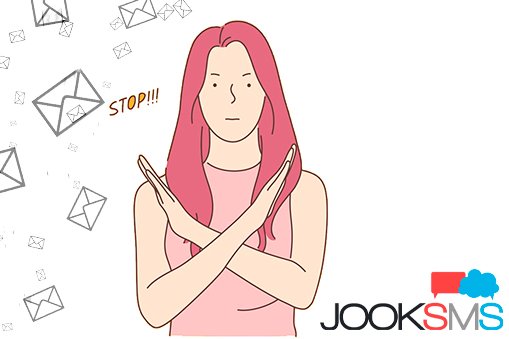
Sending without consent is a common mistake that damages customer relationships. In SMS marketing, it’s both ill-advised and illegal to send messages without explicit consent in many jurisdictions.
It happens when businesses overlook the importance of permission before launching text campaigns, driven by the urgency to reach more customers or fear of losing potential leads. The root cause is often a need for more understanding or respect for customer privacy and data protection rules. Rushing marketing efforts without proper planning or knowledge of legal prerequisites leads to unsolicited messages. The effects are detrimental, including damaged brand reputation, loss of trust, and potential legal penalties.
Businesses must consistently prioritize obtaining explicit consent and offering opt-in forms on their website or during checkout to avoid consent issues. It is crucial to communicate the nature of the content and provide the option for customers to opt-out. Respecting customer privacy leads to higher engagement and better campaign performance, as customers are more likely to trust and respond positively to messages.
2. Not Continuing the Conversation

Texting can be a powerful tool in nurturing customer relationships, but it’s essential to continue the conversation beyond one message. Many businesses must avoid sending a single text or offer and not following up, leading to low conversion rates.
According to studies, 49 percent of consumers would like companies to send them personalized messages after an initial interaction, while only 36 percent of companies do. It highlights the gap between consumer preferences and business practices, causing lost opportunities for conversion.
Businesses must utilize SMS as a two-way communication channel and continue the conversation by sending follow-up messages, responding to customer inquiries, and offering personalized content. This approach fosters a sense of customer connection, leading to higher engagement and brand loyalty.
3. Texting Outside of Business Hours

Sending texts outside of business hours is a common mistake that can result in annoyed customers and possible complaints. While text messages have an average open rate of 98 percent, they also have an equally high annoyance factor when received at inappropriate times. Customers may perceive unsolicited late-night or early-morning messages as intrusive and unprofessional, damaging the brand image.
To effectively address time differences with a global audience, it is crucial to choose an API provider that can dynamically adapt to various countries’ mobile regulations. Avoid the inconvenience of receiving messages at odd hours by utilizing a provider that automatically delivers your messages to the right audience in the appropriate time zone.
For comprehensive guidance on implementing a global SMS program, consider consulting with an SMS marketing platform like JookSMS.
When targeting a local audience, consider their schedules when sending SMS messages. Since SMS prompts immediate action, aim to send them during periods when your customers are less likely to be occupied, such as before or after work or during lunch breaks. As a general guideline, refrain from sending messages before 9 a.m. or after 9 p.m.
4. Not Shortening URLs

URLs can be lengthy and take up valuable characters in SMS messages, reducing the space for essential content. Not shortening URLs is a common mistake that results in long, unreadable links, negatively impacting engagement rates.
Shortened URLs not only save space but also make the link more visually appealing and trackable. Use a URL shortener like Bitly or Ow.ly to create concise links that redirect to your business’s webpage. Additionally, shortened URLs allow marketers to track click-through rates, providing insights into campaign performance and audience behavior.
5. Not Including Calls to Action (CTAs) in Your Messages
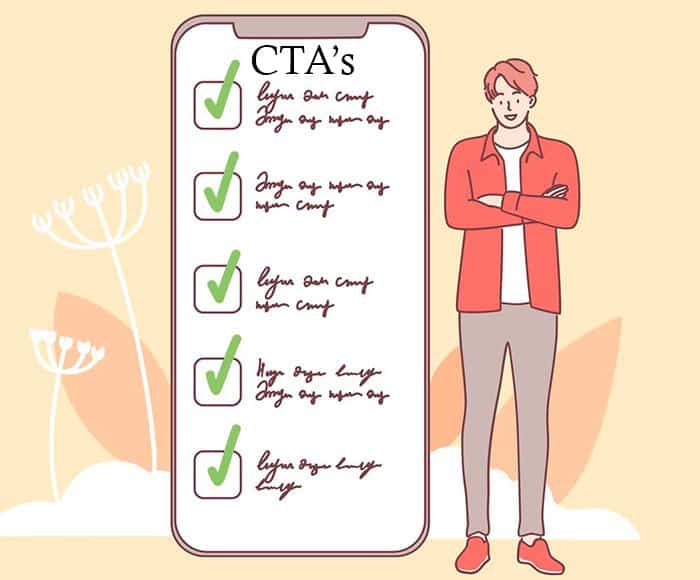
Text messages boast a click-through rate that surpasses other communication channels, such as email, by almost 30 times! However, it’s important to note that not every SMS requires a call-to-action. Some messages serve as simple updates that don’t necessitate any customer action. Nevertheless, when your SMS strategy has a specific objective, like boosting sales or increasing sign-ups, it is imperative to include a clear and concise call-to-action that guides customers on what to do.
Ensure that your SMSes include well-defined and straightforward CTAs tailored to your campaign goals. For example, if the objective is sales conversions, have a link to your website or an option for customers to reply with a keyword to claim a discount. If increasing sign-ups is the goal, consider including a unique promo code or a link for customers to join your mailing list.
6. Not Sending a Welcome Message

It’s essential to ensure people remember they signed up for your SMS list. Sending an SMS without a warm welcome might make them mistake it for spam and block you. Instead, make a lasting impression by sending a personalized welcome message that includes their name, expresses gratitude, and reminds them of why they signed up.
Additionally, it’s helpful to provide a glimpse of what they can anticipate in the upcoming weeks, such as exclusive access to specials, giveaways, and promotions. However, keep in mind that brevity is key. Aim to keep the message concise, ideally consisting of four to six sentences. A simple but thoughtful gesture like a welcome message can significantly improve engagement and reduce opt-out rates.
7. Sending the Same Message or Offer
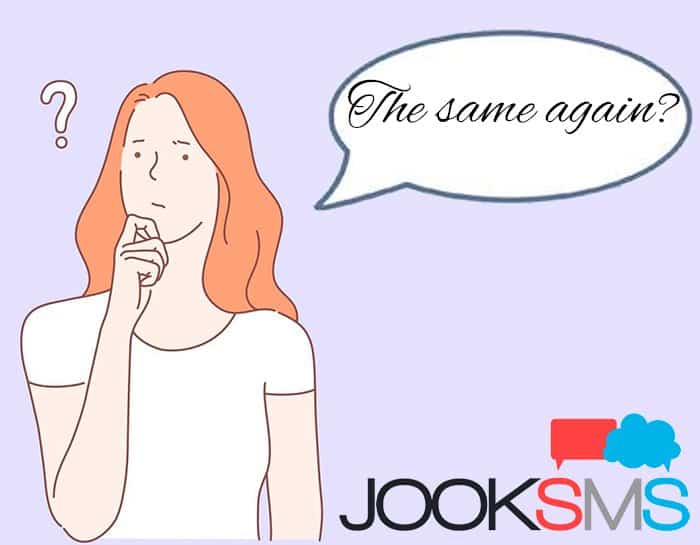
Sending repetitive messages or offers is another mistake businesses often make in SMS marketing. It not only annoys customers but also increases open rates and conversions, leading to better campaign performance.
Segmentation and personalization are crucial techniques to avoid sending generic messages. Segment your audience based on demographics, location, purchase history, and behavior patterns. Personalize messages to align with each segment’s interests, preferences, and needs. It will lead to better engagement and conversions. Regularly reviewing customer data and updating segments ensures that the right message reaches the right people at the right time, resulting in higher engagement and conversions.
8. More Messages Sent than Expected
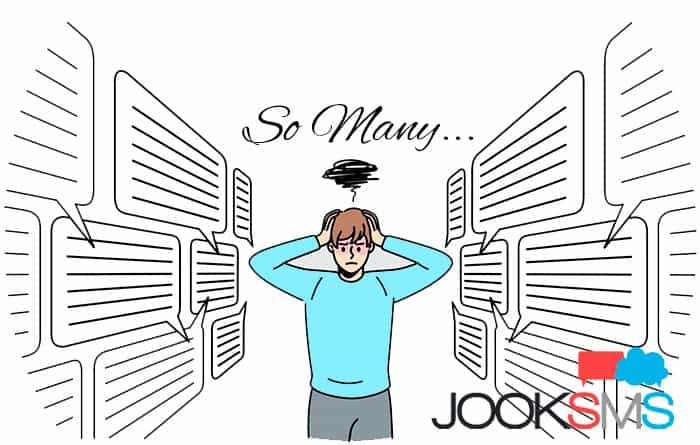
With an open rate of over 95 percent, some brands can’t resist bombarding their subscribers with one text after another, hoping for a positive response. However, this approach often backfires, leading to customer annoyance and increased unsubscription.
It’s crucial to limit your text promotions to once or twice per week. Remember, less is more when it comes to SMS. Only send messages that are relevant or require immediate action from your customers. By adhering to this best practice, you can avoid irritating your customers and protect your brand reputation.
9. Ignoring List Expansion

When starting with SMS marketing, your top priority should be the growth of your subscriber list. Why? Because the more phone numbers you have, the more significant profit potential you can create. Surprisingly, many new SMS marketers need to give more attention to list building.
To maximize your results, consider running ads, promoting your SMS newsletter on social media, and leveraging every available platform to generate more phone numbers. Ask customers if they would like to sign up during the checkout process in your shop. These strategies significantly enhance the growth and success of your SMS marketing endeavors.
10. Being Overly Concerned with Sales
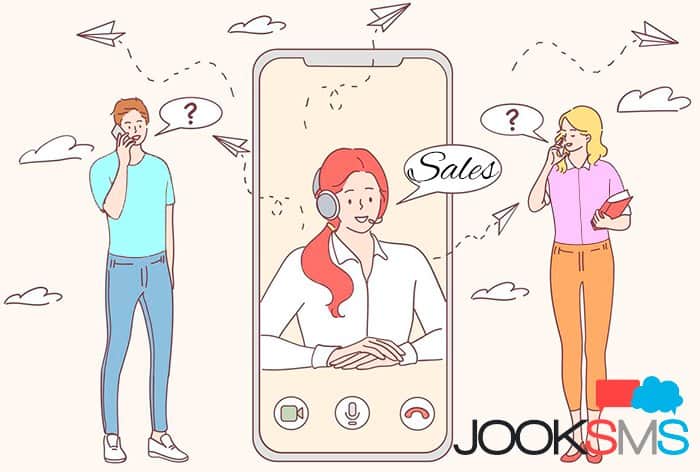
While SMS marketing is a powerful tool for boosting sales, excessive focus on sales can be detrimental. When businesses send too many sales-driven messages, their communication may seem impersonal, pushing customers away. The misconception that more sales-oriented messages lead to more conversions is the root cause of this issue.
Focusing solely on sales can decrease engagement, higher opt-out rates, and a loss of trust in your brand, harming long-term customer relationships and sales potential.
Companies must balance sales-focused and value-driven content in their SMS communications to avoid this mistake. Include helpful tips, industry news, or customer success stories alongside promotional messages. This approach keeps your audience engaged and builds a positive brand image.
Avoiding excessive sales concentration brings manifold benefits. With a balanced mix of content types, you’ll likely see improved engagement rates, lower opt-out rates, and increased customer satisfaction. Importantly, this approach paves the way for stronger customer relationships, which are crucial for sustainable business growth.
11. Not Being Clear in Message
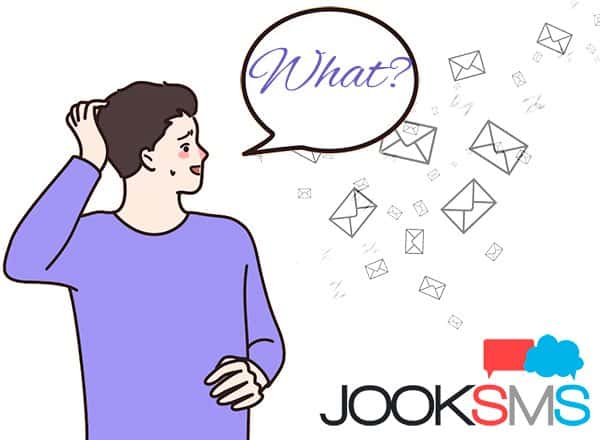
Clarity is essential in SMS marketing. With a character limit of 160 characters, you must convey your message effectively and directly to the point.
Avoid using industry jargon or vague terms that can confuse customers. Clearly state your offer, promotion, or call-to-action so that customers understand what you want them to do. You can also use simple but powerful words like “now” or “limited time” to urge and encourage immediate action from subscribers.
Remember, your goal with SMS marketing is to communicate quickly and efficiently. You can increase customer understanding and boost conversions with short and simple messages.
12. Not Using A/B Testing
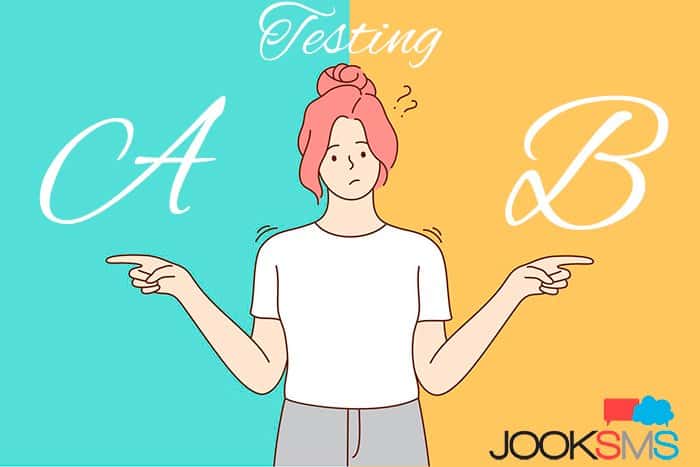
Before sending out your campaign to your entire list, it is crucial to test it to avoid expensive errors. Common mistakes to watch out for include typos, broken links, and poor timing. To gauge the effectiveness, consider implementing A/B testing for your SMS campaigns to determine which version performs better.
Make A/B testing an essential practice for your SMS marketing campaigns. This approach allows you to test different variables, such as message length, CTA placement, and wording. By analyzing the results and optimizing your campaigns accordingly, you can improve your overall campaign performance and increase ROI.
13. Not Using MMS Marketing
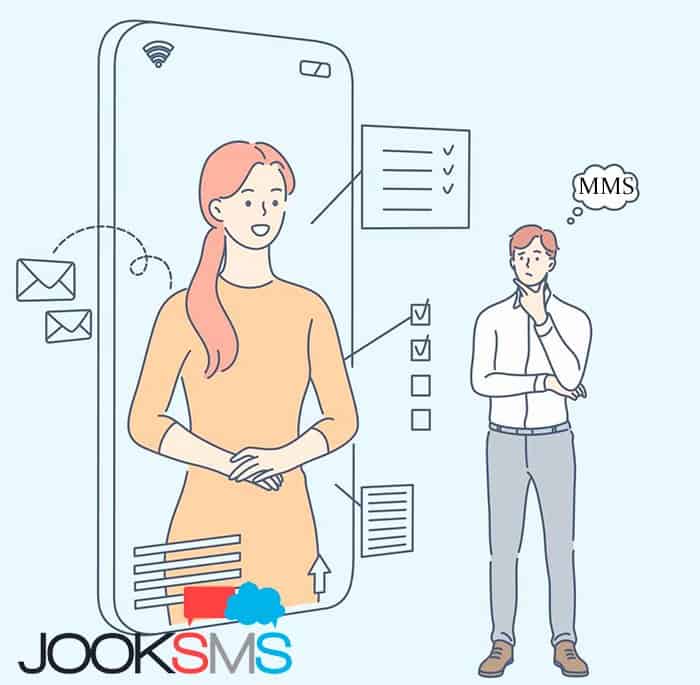
MMS has emerged as the preferred format for text message marketing among enterprise companies, and for good reason. The impressive 6,000% increase in ROI that brands have witnessed with MMS speaks volumes. Unlike SMS, which is limited to plain text within 160 characters, MMS opens up a new world of possibilities. Brands such as Vans, Ikea, and Starbucks leverage MMS to deliver captivating and high-quality images, videos, and GIFs. This move results in a truly engaging customer experience.
For businesses, not embracing MMS marketing is a missed opportunity. By integrating multimedia elements into your SMS campaigns, you can effortlessly capture customers’ attention and foster brand loyalty. However, it’s crucial to use MMS judiciously and strategically, as excessive usage may be perceived as spammy or intrusive.
14. Not Personalizing Text Messages
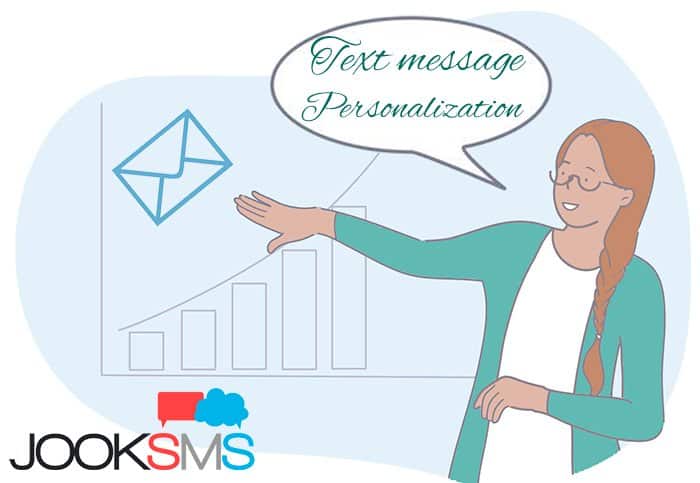
Addressing consumers by their first name increases the likelihood of buying from a brand. Incorporating a subscriber’s first name in text message marketing, especially at the beginning of the message, is a simple and effective way to boost conversions.
Additionally, when brands recommend options based on past purchases or demonstrate knowledge of a customer’s purchase history, it increases the chance of consumer purchases by 75%. Recognizing the importance of this, brands like Old Navy actively engage with subscribers through customer preference surveys. It gives a deeper understanding of their subscribers and provide a more personalized experience.
Personalization is a potent tool in any marketing strategy, and SMS is no exception. Using customer data and preferences, you can customize your messages to target specific segments of your audience, enhancing the relevance and effectiveness of your campaigns. This personal touch also helps foster stronger customer relationships and promote brand loyalty.
15. Using a Shared SMS Short-Code

SMS short codes are unique and memorable phone numbers used for sending text messages to your subscribers. Unfortunately, many businesses opt for a shared short code instead of investing in their dedicated number.
Using a shared short code means that you share the same number with other businesses, which can lead to confusion or mixed messages from customers. Additionally, if one business misuses the number, it can cause problems for all users of that shared code.
Investing in your dedicated SMS shortcode allows you to build brand recognition and trust with your subscribers. It also gives you complete control over messaging and eliminates any potential issues caused by sharing a number with other businesses.
How Can SMS Marketing Mistakes Affect Your Business?
Mistakes in SMS marketing can harm your business, including losing customers. Poorly written or irrelevant messages may lead to unsubscribes or being marked as spam. It can damage your reputation and result in lost business. Additionally, sending messages to a large audience simultaneously may get them blocked by service providers, causing your audience to miss out on your messages and wasting resources.
You also need to include your target audience. A blanket approach to sending messages to everyone on your contact list might not be practical. If the recipients are uninterested in your product or service, they will likely dismiss the message. It could result in a fruitless expenditure on sending SMS messages to individuals without intending to become your customers.
Lastly, your business could come across as impersonal and automated. The ease of automated marketing and messaging services tempt you to send messages without personalizing them. This impersonal touch could deter potential customers.
Consumers gravitate towards companies that offer dependable services, and this expectation extends to text message communication as well. While SMS marketing presents convenience and cost-effectiveness, it is crucial to steer clear of common pitfalls. Take the opportunity to explore new strategies and options that can enhance the effectiveness of your campaign. Achieving success in SMS marketing requires a deep understanding of potential mistakes and how to avoid them.
What are the Best Practices with SMS Marketing?
SMS marketing has helped businesses flourish through a sustained text message marketing strategy. Here are some SMS marketing best practices to ensure that your SMS marketing is effective.
- Get Permission Before Sending Messages – Once someone joins your text list, it is crucial to verify their registration for your text marketing list. It entails sending a confirmation message to ensure their inclusion. Provide your business details, opt-out instructions, and what they can expect as a subscriber.
- Be Mindful of Timing and Frequency -Respect your subscribers by complying with the TCPA’s standards for text message marketing timing. Avoid bothering or waking them up in the middle of the night. Limit your texts and only send them between 8 a.m. and 9 p.m. in the receiver’s local time.
- Keep SMS Relevant and Engaging – When writing text messages for your subscribers, remember to keep them concise and tailored to your audience. Since people’s phones are personal, it’s important to provide valuable content that promotes trust. Describe your product, service, sale, or event, and include a link or shortcode for subscribers to take action.
- Personalize Your Messages – Segmenting your list based on customer preferences is vital to keeping messages relevant. By targeting customers who have attended events or scheduled services with your business, you can send them text messages about future events or sales that align with their interests.
- Remember CTAs – Action-based text messages should include a clear call to action that prompts subscribers to take the desired action, such as purchasing a product or scheduling an appointment. Standard calls to action are “buy now” and “schedule an appointment.”
- Integrate With Other Marketing Channels – While SMS marketing is a powerful tool on its own, integrating it with other channels like email or social media can enhance the efficacy of your campaigns. Text messages in your overall marketing strategy can help you reach customers through various touchpoints and reinforce your messaging.
- Regularly test, monitor, and analyze – Analyzing your campaigns’ performance and adjusting based on the results is crucial for long-term success with SMS marketing. This analysis includes tracking open rates, click-through rates, and ROI to ensure your strategy aligns with your business goals.
What are the Advantages of SMS Marketing?
Businesses recognize the advantages of incorporating text message marketing into their overall strategy. With a large majority of Americans owning smartphones and preferring texting over talking, SMS marketing is becoming a popular solution. Here are some of the top advantages of using SMS marketing for businesses.
- High Open Rate – Studies show that 98% of text messages are opened, with the majority being read within the first few minutes of being received. This high open rate makes SMS marketing an effective tool for reaching an audience quickly.
- Direct and Immediate Communication – With SMS marketing, businesses can send natural and immediate communication to their subscribers’ phones. Unlike email or social media, where messages can get lost in a cluttered inbox or feed, text messages are received directly by the recipient.
- Cost-Effective – Text marketing is more affordable than other marketing types. Businesses can reach a large audience without breaking the bank and see a good return on investment.
- Highly Targeted – By segmenting your contact list based on customer preferences and behaviors, you can send targeted messages that resonate with your audience. This personalization leads to higher engagement and better results.
- Increased Customer Engagement – With SMS marketing, businesses can interact with their customers on a more personal level. Providing valuable content and personalized offers allows businesses to increase customer engagement and build lasting relationships.
- Flexible and Customizable – SMS marketing allows businesses to be creative and flexible with their messages. From promotional campaigns to customer service notifications, there are endless possibilities for businesses to utilize text messaging for their unique needs.
What are the Disadvantages of SMS Marketing?
While SMS marketing can offer many benefits, it’s essential to consider some potential drawbacks before implementing this strategy. Here are some disadvantages of using SMS marketing for businesses.
- Limited Character Count – Text messages have a character limit, which means businesses must keep their messages short. This limitation may make it challenging to convey detailed information or complex promotions effectively.
- Strict Regulations – The Federal Communications Commission (FCC) has strict regulations for text message marketing. For example, you must obtain explicit permission from customers before sending them any text messages and include opt-out instructions in every message.
- Risk of Overwhelming Customers – While SMS marketing can be an effective tool, it’s crucial to find the right balance between engaging and overwhelming your customers. Bombarding customers with too many texts may lead them to unsubscribe from your list.
- High Opt-Out Rate – With any marketing strategy, there is always a risk of losing subscribers. In the case of SMS marketing, if customers feel they are receiving too many irrelevant or spammy messages, they may opt out of your list altogether.
- Lack of Visual Appeal – Compared to other forms of marketing that allow for more visual elements, such as images or videos, text messaging limits businesses to plain text. This limitation may make it challenging to create visually appealing and attention-grabbing campaigns.
How to Run a Successful Campaign with SMS Marketing?
A successful SMS marketing campaign drives conversion and increases sales for the business. There are several crucial steps businesses should follow to ensure their SMS marketing campaigns are effective.
- Know Your Audience – Before sending text messages, you must understand your target audience and their preferences. Segmenting contact list and sending personalized messages increases the chances of engagement and conversion.
- Craft Compelling Messages – With limited characters, every word counts in an SMS message. Businesses must craft compelling messages that grab the reader’s attention and prompt them to take action. Be concise and clear about what you want customers to do.
- Include a Clear CTA – As mentioned earlier, a clear call to action is vital for driving conversions. Use action words like “buy now” or “claim offer” to prompt subscribers to take the desired action.
- Utilize Automation and Scheduling – To save time and ensure consistency with your campaigns, consider using automation and scheduling tools. These tools allow businesses to pre-schedule messages and set up automated responses based on customer actions.
- Track and Analyze Results – As with any marketing strategy, tracking and analyzing results is crucial for long-term success. Use metrics like open rates, click-through rates, and conversions to measure the performance of your SMS campaigns and make necessary adjustments.
SMS marketing ideas vary from one business to another. You can creatively use and tailor SMS marketing to promote sales, send event reminders, share exclusive offers, collect feedback, and more.
Why SMS Marketing is Important?
SMS marketing is vital in today’s digital age as it enables direct, personalized, and immediate communication with customers. With ubiquitous smartphones and consumers favoring quick, concise information, SMS marketing meets customers where they are: on their phones.
Studies reveal that text messages have an astonishing 98% open rate, with 90% being read within 3 minutes. This level of engagement far surpasses email marketing, which only has an average open rate of 20%.
Moreover, SMS marketing not only ensures message consumption but also drives action. Research shows that SMS marketing campaigns have seven times higher response rates than email campaigns. It highlights the power and potential of SMS marketing in effectively reaching and engaging audiences, driving conversions, and boosting business sales.
Do All Customers Love Receiving SMS Campaigns?
No. Not all customers appreciate SMS campaigns. Success in SMS marketing relies on consent and relevance. While some find value in subscription texts and promotions, others see them as intrusive or spammy. Vibes found that 60% of consumers feel positively about promotional texts, but personalization is critical. Understanding preferences and delivering tailored content is crucial for maintaining positive sentiment and high engagement.
